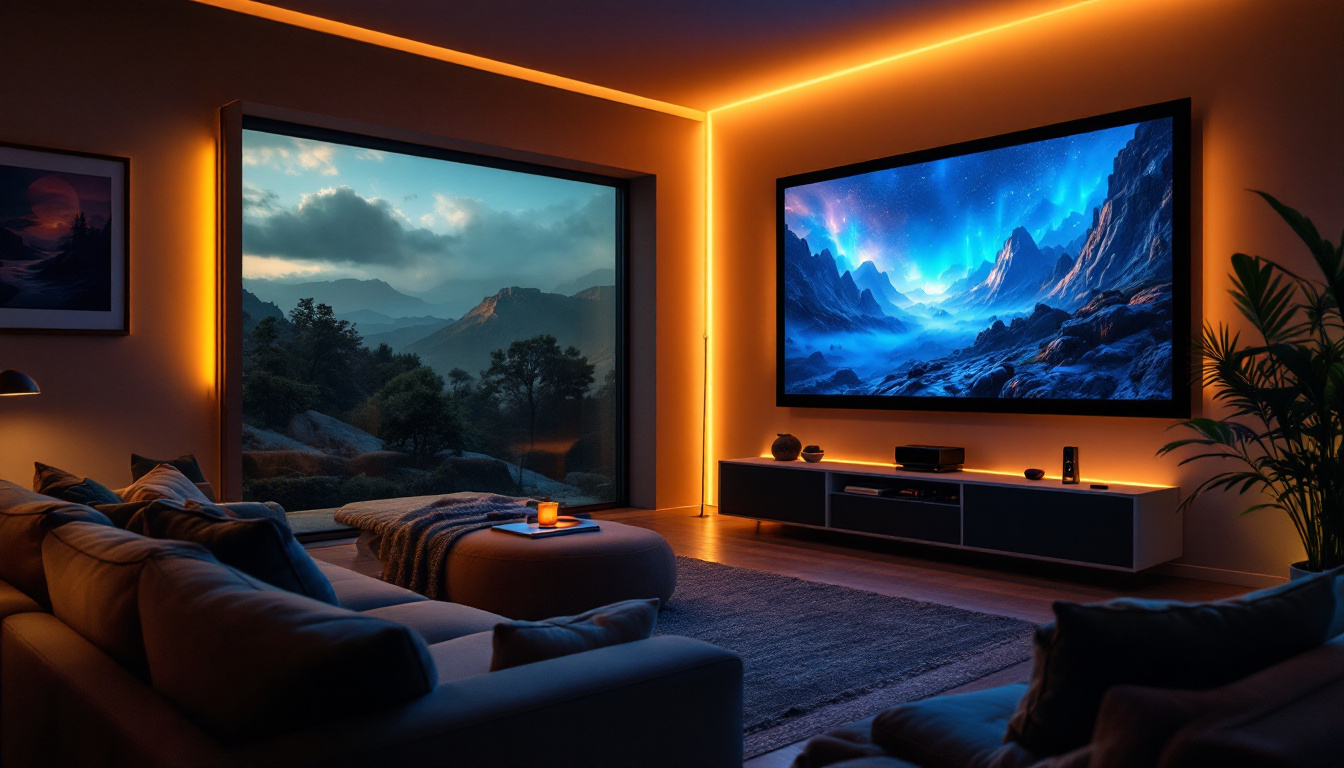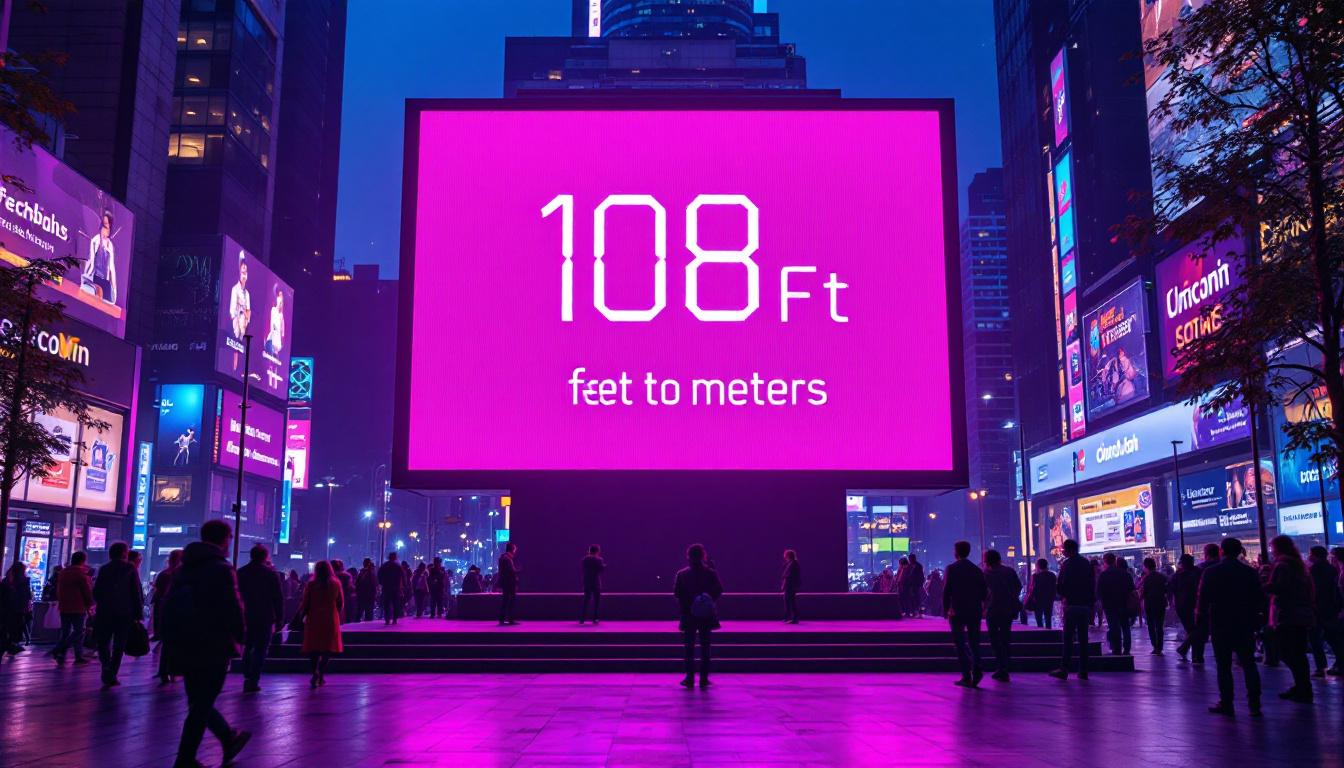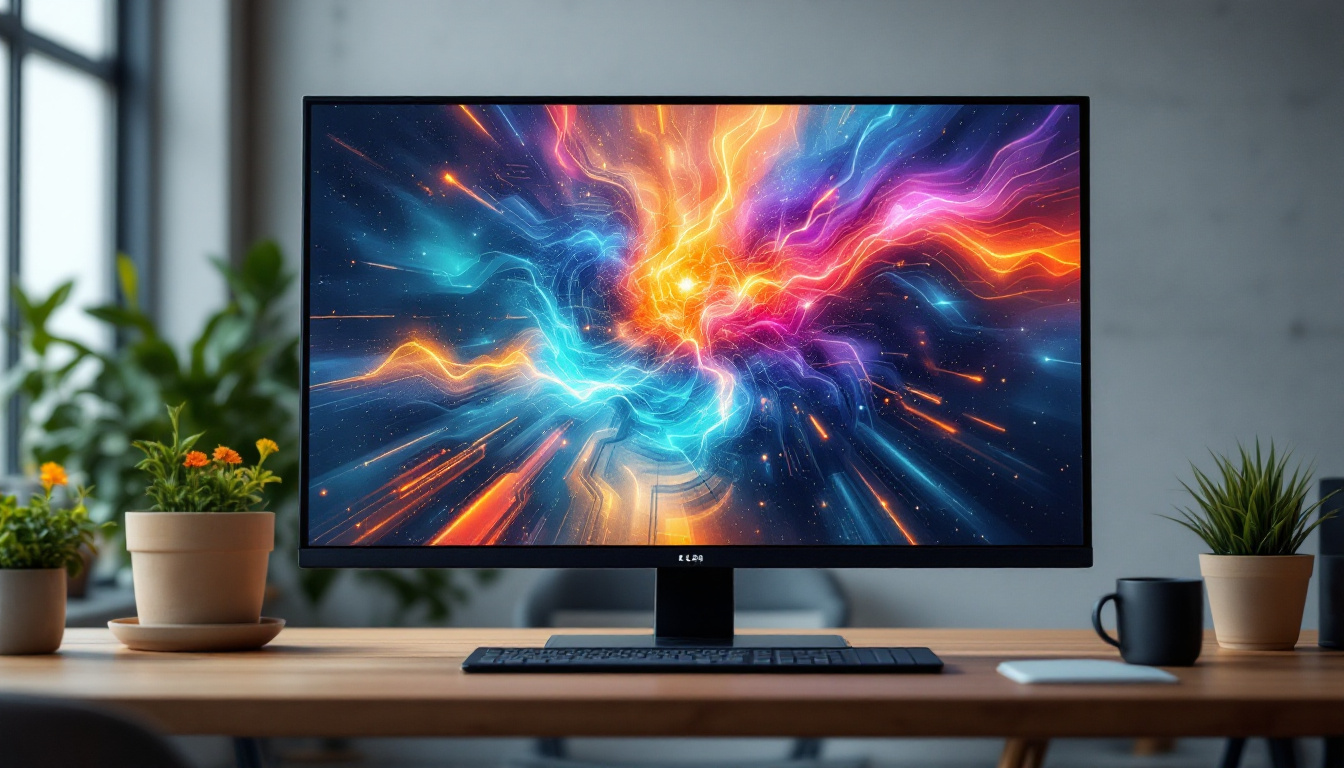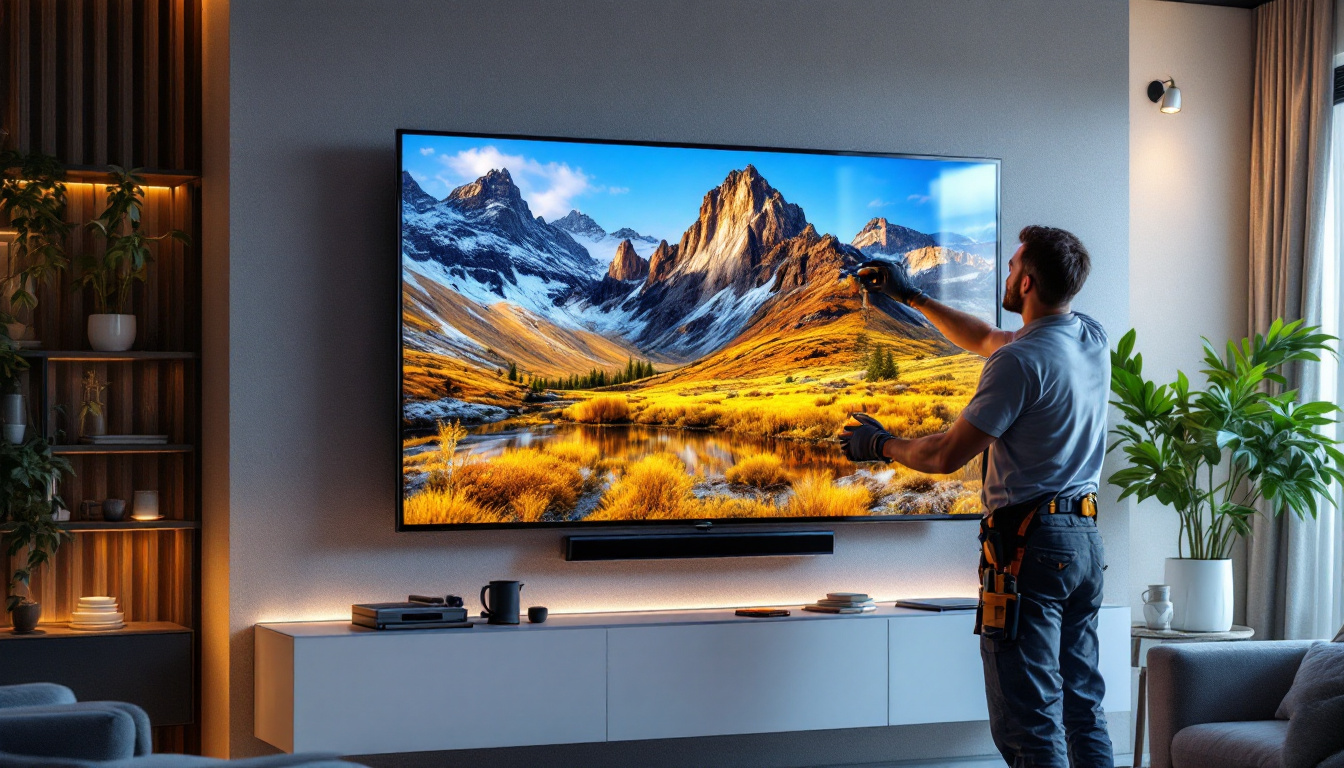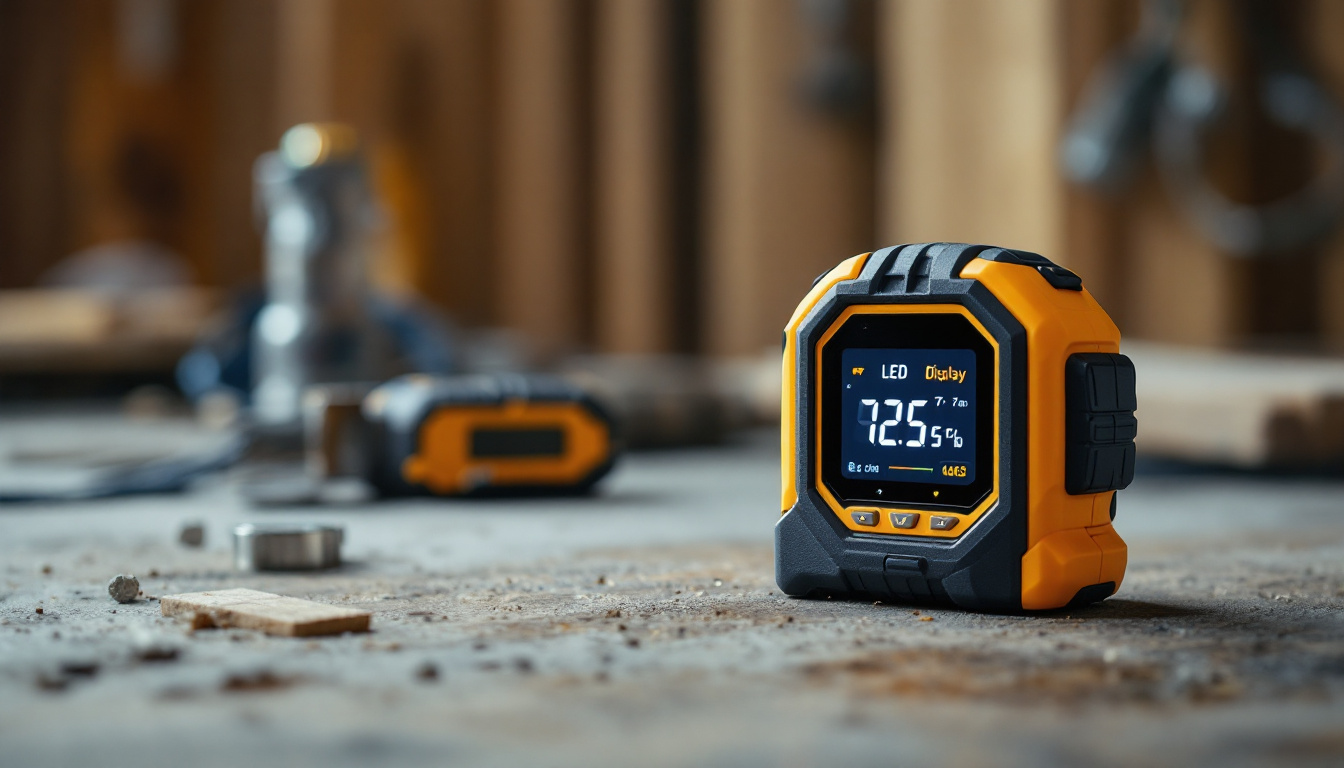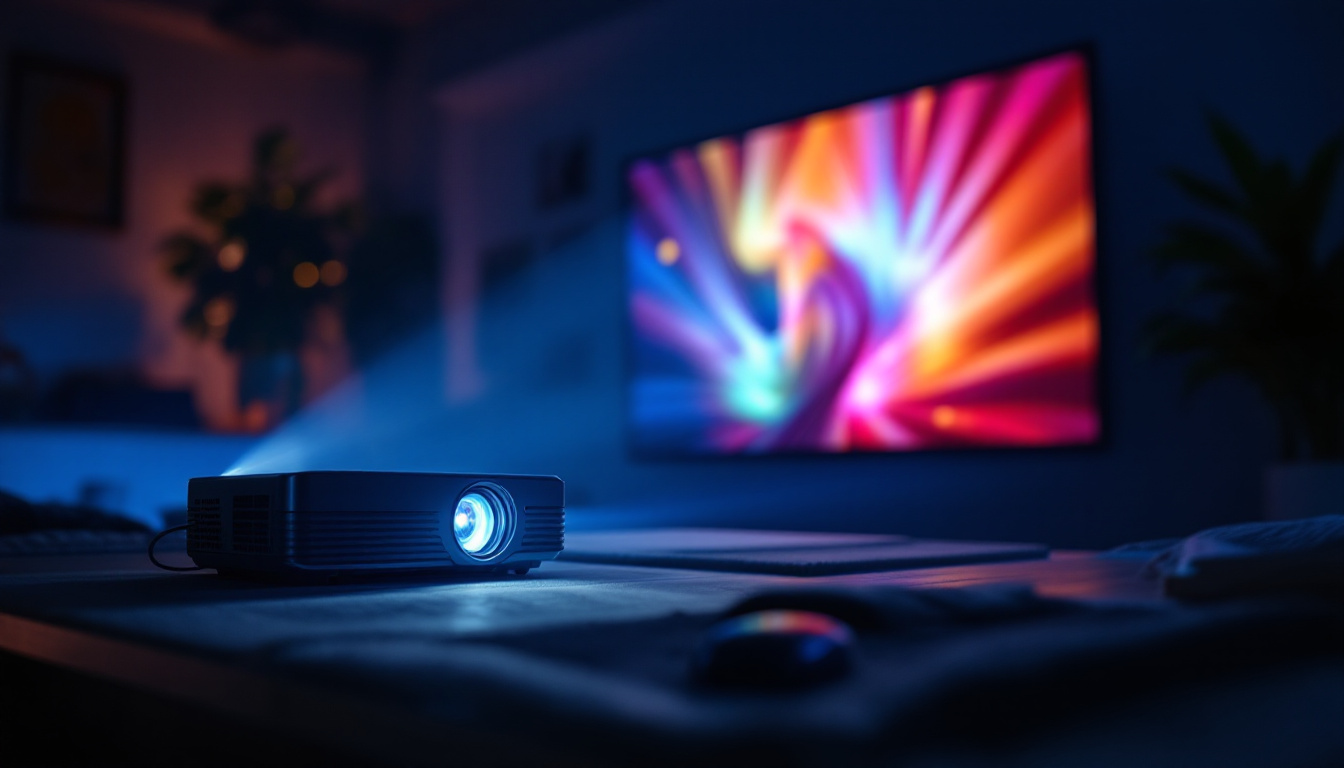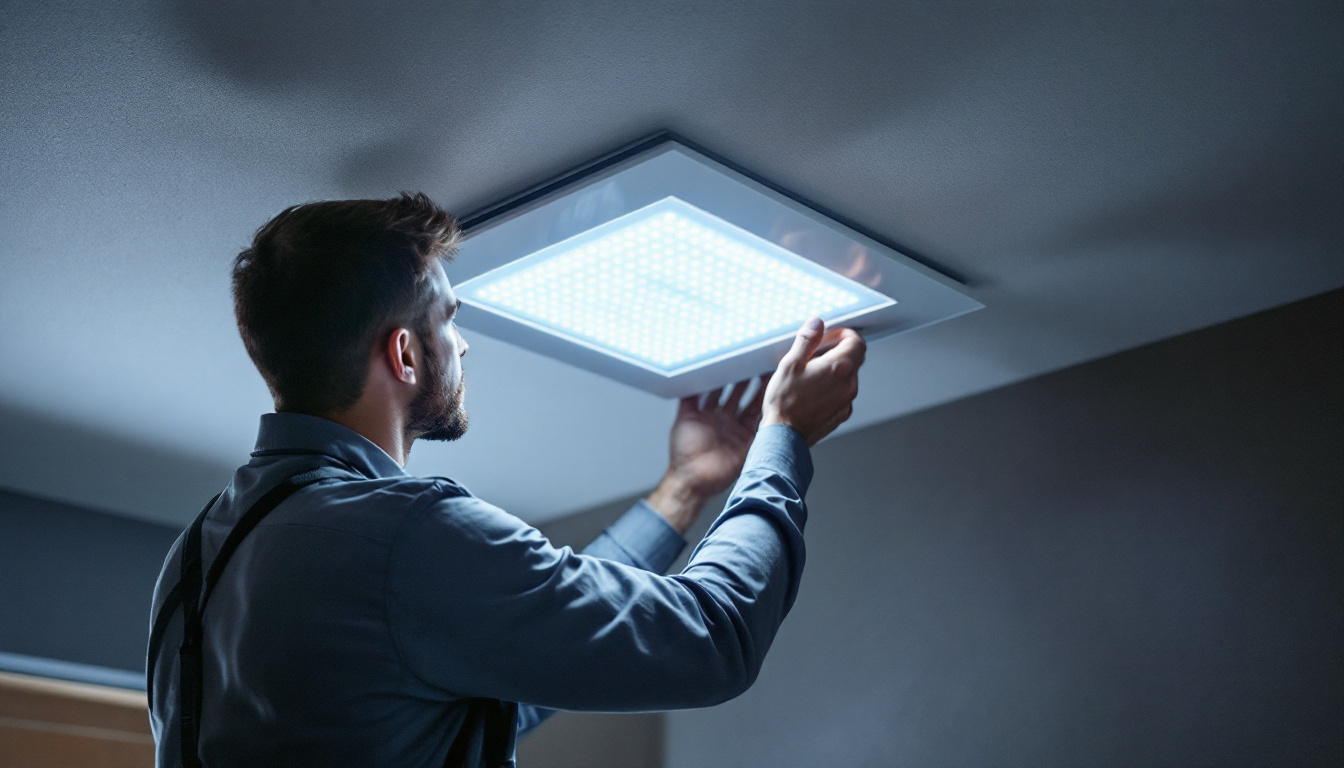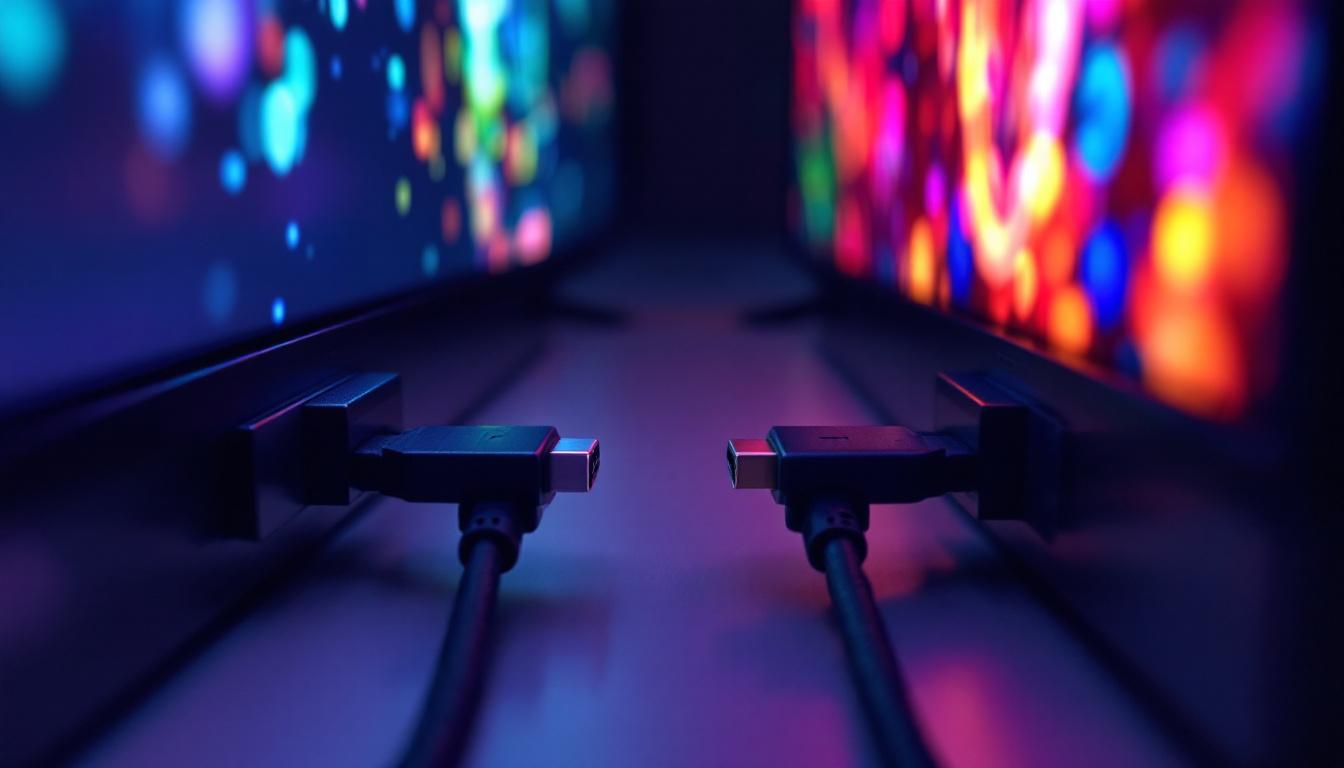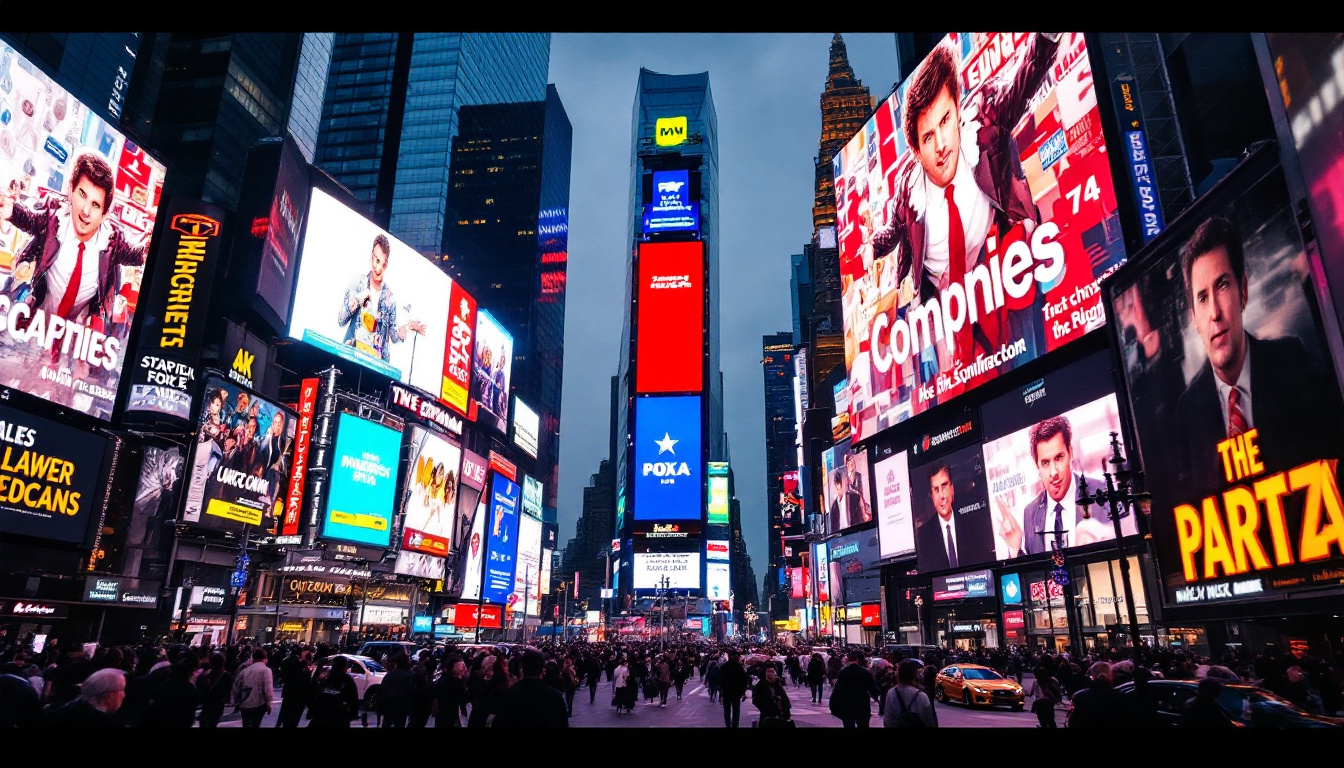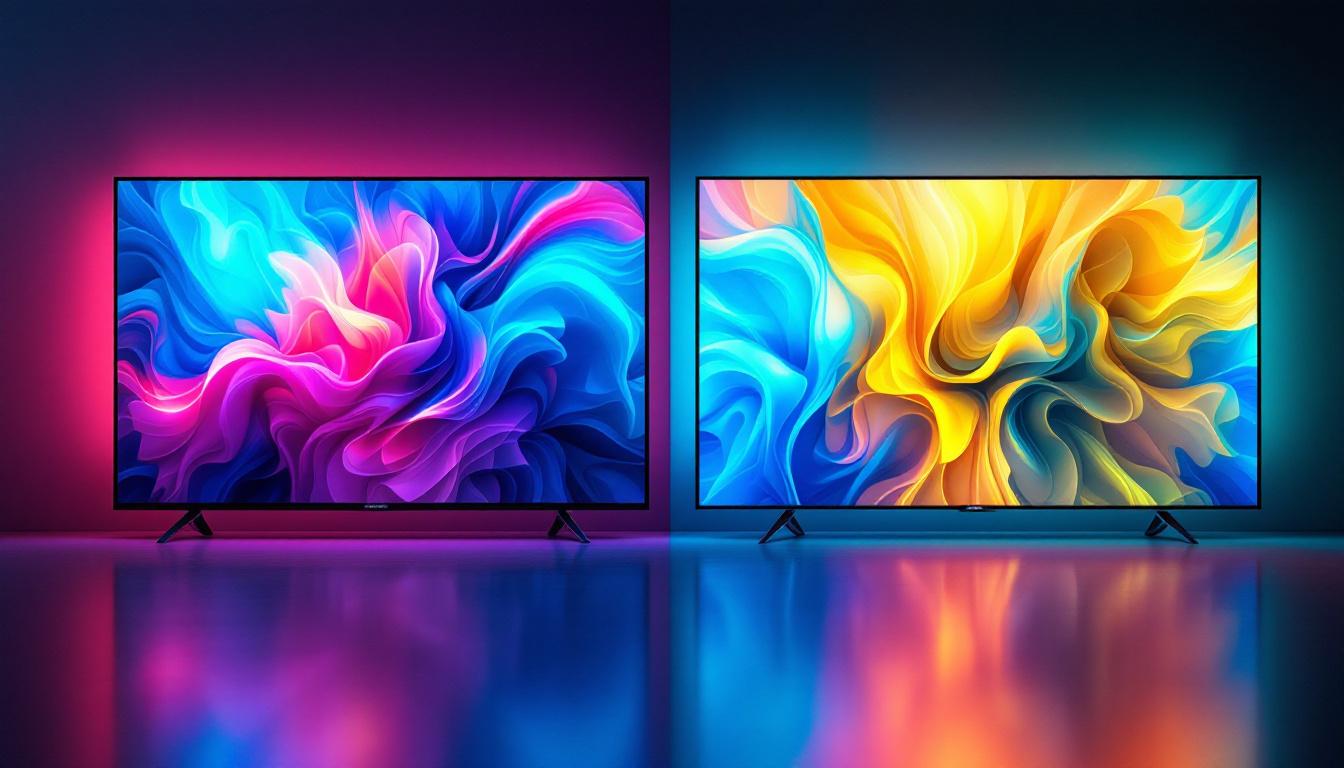In the realm of modern technology, LED displays have become ubiquitous, serving various applications from televisions to digital signage. One crucial aspect of understanding these displays is the measurement of pixel pitch, often expressed in millimeters (mm). This article aims to clarify the conversion of 4.8 mm to inches and delve into the significance of pixel pitch in LED displays.
Understanding Pixel Pitch
Pixel pitch is a critical specification in LED displays that defines the distance between the centers of two adjacent pixels. It is usually measured in millimeters and directly influences the display’s resolution, clarity, and viewing distance. A smaller pixel pitch means a higher resolution, allowing for clearer images and finer details.
How Pixel Pitch Affects Display Quality
The pixel pitch impacts not only the resolution but also the overall quality of the display. For instance, a display with a pixel pitch of 4.8 mm provides a good balance between clarity and cost, making it suitable for various applications, including indoor and outdoor environments. The closer the pixels are, the more detailed the image appears, which is particularly important for applications where viewers are closer to the screen. Additionally, the pixel pitch can influence the brightness and color accuracy of the display; smaller pitches often allow for better color reproduction, which is essential in environments where visual fidelity is paramount.
Applications of 4.8 mm LED Displays
Displays with a pixel pitch of 4.8 mm are commonly used in environments where high-quality visuals are essential. These include:
- Corporate presentations
- Concerts and live events
- Retail advertising
In each of these scenarios, the clarity and vibrancy of the images can significantly impact viewer engagement and message retention. For example, in corporate presentations, a 4.8 mm display can enhance the visibility of graphs and charts, making complex data more digestible for the audience. In the context of concerts and live events, the dynamic visuals created by these displays can elevate the overall experience, drawing in the audience and creating a more immersive atmosphere. Retail advertising also benefits from this pixel pitch, as high-resolution displays can showcase products in stunning detail, capturing the attention of potential customers and driving sales.
Moreover, the versatility of 4.8 mm LED displays allows them to be used in various settings, from trade shows to sports arenas. In trade shows, these displays can be instrumental in attracting foot traffic to a booth, with eye-catching visuals that stand out in a crowded environment. In sports arenas, the ability to deliver real-time statistics and highlights in high definition can enhance the spectator experience, making every game more thrilling. As technology advances, the demand for high-quality displays with optimal pixel pitch continues to grow, pushing manufacturers to innovate and improve the performance of LED technology.
Converting 4.8 mm to Inches
To understand the size of a 4.8 mm pixel pitch in inches, it is essential to perform a straightforward conversion. The conversion factor between millimeters and inches is 1 inch equals 25.4 mm. Therefore, to convert 4.8 mm to inches, the following calculation can be applied:
Calculation Process
The formula for converting millimeters to inches is:
inches = millimeters / 25.4Applying this formula to 4.8 mm:
inches = 4.8 mm / 25.4 = 0.189 inchesThus, a pixel pitch of 4.8 mm is approximately equal to 0.189 inches. This small measurement highlights the compact nature of modern LED technology and its capability to produce high-resolution displays.
Visualizing the Size
Understanding the actual size of 4.8 mm in inches can be challenging without a visual reference. To put this into perspective, consider that a standard credit card is about 0.33 inches thick. Thus, a pixel pitch of 4.8 mm is less than one-fifth of that thickness, illustrating how closely packed the pixels are in a display with this specification.
Benefits of Choosing 4.8 mm LED Displays
When selecting an LED display, the pixel pitch is a significant factor to consider. A 4.8 mm pixel pitch offers several advantages that make it a popular choice among various users.
Cost-Effectiveness
One of the primary benefits of 4.8 mm LED displays is their cost-effectiveness. Compared to smaller pixel pitches, which can be more expensive, 4.8 mm displays provide a good balance of quality and affordability. This makes them an attractive option for businesses looking to invest in high-quality displays without breaking the bank.
Versatility in Use
4.8 mm LED displays are versatile and can be used in multiple settings. Whether for indoor environments like conference rooms or outdoor venues such as stadiums, these displays can adapt to various lighting conditions and viewing distances. This flexibility allows businesses to utilize them for different purposes, from advertising to information dissemination.
Limitations of 4.8 mm LED Displays
While 4.8 mm LED displays come with numerous benefits, they are not without limitations. Understanding these drawbacks is essential for making an informed decision.
Resolution Constraints
One of the main limitations of a 4.8 mm pixel pitch is its resolution. For applications requiring ultra-high-definition images, smaller pixel pitches may be necessary. In environments where viewers are very close to the screen, such as in a retail setting, a higher resolution may be required to ensure image clarity and detail.
Viewing Distance Considerations
Another consideration is the optimal viewing distance. While a 4.8 mm pixel pitch is suitable for many applications, it may not be ideal for situations where viewers are extremely close to the display. In such cases, a smaller pixel pitch would provide a better viewing experience, as it would reduce the visibility of individual pixels.
Comparing 4.8 mm to Other Pixel Pitches
To fully understand the value of a 4.8 mm pixel pitch, it is helpful to compare it with other common pixel pitches used in LED displays.
4 mm vs. 4.8 mm
A 4 mm pixel pitch offers a higher resolution than a 4.8 mm display, making it suitable for applications where detail is paramount. However, this increased resolution comes at a higher cost and may not be necessary for all users. For environments where viewers are at a greater distance, a 4.8 mm display may suffice, providing a more economical choice.
5 mm vs. 4.8 mm
Conversely, a 5 mm pixel pitch is generally more affordable than a 4.8 mm display. While it may be suitable for less demanding applications, the slight increase in pixel pitch can result in noticeable differences in image quality, particularly in environments where viewers are closer to the screen.
Installation and Maintenance of 4.8 mm LED Displays
Proper installation and maintenance are crucial for maximizing the lifespan and performance of any LED display, including those with a 4.8 mm pixel pitch.
Installation Guidelines
When installing a 4.8 mm LED display, several factors should be considered, including:
- Location: Ensure the display is placed in a location that maximizes visibility while minimizing glare from ambient light.
- Mounting: Use appropriate mounting hardware to secure the display safely, considering the weight and size of the unit.
- Power Supply: Ensure that the display is connected to a reliable power source to prevent interruptions.
Maintenance Tips
Regular maintenance is essential to keep a 4.8 mm LED display functioning optimally. Some maintenance tips include:
- Cleaning: Regularly clean the screen to remove dust and debris that can affect image quality.
- Software Updates: Keep the display’s software up to date to ensure optimal performance and security.
- Inspection: Periodically check for any signs of wear or damage, addressing any issues promptly to prevent further complications.
Future of LED Display Technology
The future of LED display technology looks promising, with advancements continually being made to improve resolution, efficiency, and versatility. As technology evolves, pixel pitches are expected to decrease, allowing for even finer details and sharper images.
Emerging Trends
Some emerging trends in LED display technology include:
- MicroLED: This technology offers even smaller pixel pitches and improved brightness, making it ideal for high-end applications.
- Flexible Displays: Innovations in materials are leading to flexible LED displays that can be curved or shaped to fit various environments.
- Smart Displays: Integration with IoT technology is making displays smarter, allowing for interactive features and real-time content updates.
Impact on Industries
The advancements in LED display technology are set to impact various industries significantly. From retail to entertainment, businesses are leveraging these innovations to enhance customer experiences and streamline operations. As displays become more sophisticated, the potential applications will continue to expand, driving further growth in this dynamic field.
Conclusion
Understanding the conversion of 4.8 mm to inches is just one aspect of appreciating the intricacies of LED display technology. With its balance of quality and cost-effectiveness, a 4.8 mm pixel pitch is an excellent choice for many applications. However, it is essential to consider the specific needs of each project, including resolution requirements and viewing distances.
As technology continues to evolve, the future of LED displays promises even more exciting developments. Whether for corporate, retail, or entertainment purposes, staying informed about pixel pitch and display specifications will empower users to make the best choices for their needs.
In summary, the 4.8 mm pixel pitch serves as a testament to the advancements in LED display technology, offering a blend of performance, versatility, and affordability that meets the demands of today’s fast-paced digital landscape.
Explore Cutting-Edge LED Display Solutions
Ready to elevate your visual experience with the latest in LED display technology? Look no further than LumenMatrix, a pioneer in crafting immersive and dynamic visual displays. From vibrant Indoor and Outdoor LED Wall Displays to innovative solutions like Vehicle LED Displays, LED Posters, and even Custom LED Displays, LumenMatrix offers a wide array of products designed to captivate your audience and amplify your message. Embrace the future of digital signage with LumenMatrix’s All-in-One and Transparent LED Displays, and discover how our Floor and Sports LED Displays can transform any space into a spectacle. Check out LumenMatrix LED Display Solutions today and join the revolution in visual communication.


